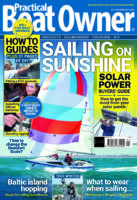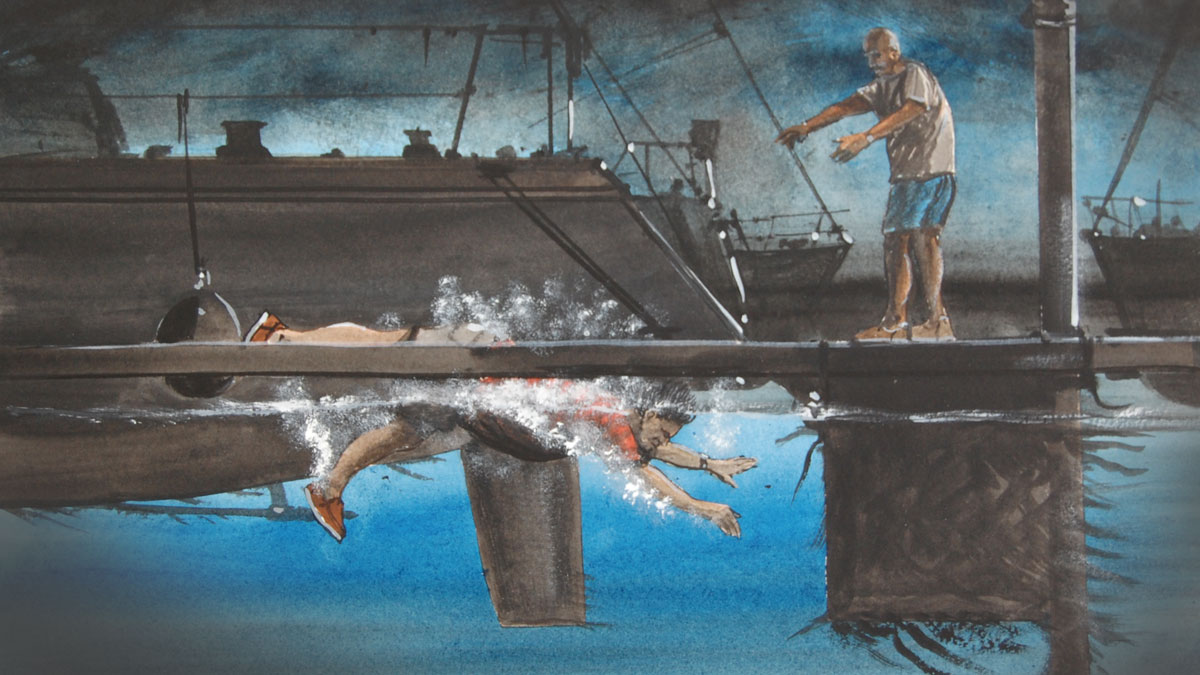Big changes to marine radio device rules are planned to be brought into the UK, impacting man overboard (MOB) locator devices.
New European safety rules to address congestion of automatic identification system (AIS) frequencies used by Autonomous Maritime Radio Devices (AMRDs) have already taken effect in many countries including Ireland.
In essence, devices that mark fish farm boundaries and pot buoys or track hire boats and various other marine objects will have to use Ch2006 and not AIS 1 and AIS 2 frequencies.
Ch2006 will effectively become a new low-power AIS frequency for such objects.
The only MOB AIS devices allowed will be those that incorporate digital selective calling (DSC) on Ch70 – so called Class-M compliant.
Find out more about the AIS man overboard devices available on the market
The UK’s communications regulator, the Office of Communications (Ofcom) is working with the Maritime and Coastguard Agency (MCA) “to evolve the UK’s rules in step with these changes.”

Having quite recently fitted his lifejackets with two non-DSC AIS devices, at around £220 each, Mark Taylor is keen to alert other PBO readers to the new rulings. Credit: Mark Taylor
PBO reader Mark Taylor is concerned that not enough is being done to alert UK boat owners who, like him, are still buying non-DSC automatic identification system AIS devices, only to find the technology is to be phased out.
He said: “Having quite recently fitted my lifejackets with non-DSC AIS devices I am annoyed about this and do not intend to dump them.
“I bought these two devices for around £440 after discussing MOB options with RLNI crew members.”
He added: “The changes seem quite necessary and sensible but unfortunately they apply to existing devices such as AIS MOB devices which we will no longer be allowed to use.
“Despite this, such devices are still widely available to buy, even in Ireland where these changes have already been enacted.
“AIS devices that incorporate DSC are currently available but of course, at a higher cost.
“If you are about to buy a MOB device, make sure it can handle (DSC) Ch70 in order to futureproof your systems.”

Mark wishes he had chosen an AIS MOB device that incorporates digital selective calling (DSC) on Ch70
Transition plans that will impact AIS MOB devices
An Ofcom spokesman said: “Ofcom has no plans to make the current, non-class M, MOB devices obsolete in the near future”, and there will be an “appropriate phasing-out period.”
He added: “New international rules have been developed concerning the use of AMRDs. Our approach is to evolve the UK’s rules in step with these changes and we set out details of how we’ll do so in our December 2024 web notice.
“We’re working closely with the MCA, which has publicised this notice via its various social media feeds. The key points for UK licensees are:
-
Group A Class M Compliant AMRD Equipment is already authorised under the existing terms of the Ship Radio licence (SRL) and Ship Portable Radio Licence (SPRL). Separately, Ofcom will update AIS Licences to enable the use of marine aids to navigation (MAToNs) on AIS1 and AIS2 channels.
-
Ofcom is currently consulting on proposed changes to how it authorises Group B Equipment, in the interim they remain authorised under the terms of the SRL and SPRL.
-
In respect of Non-Class M MOB Devices on channels AIS 1 and AIS 2: licensees can continue to use these devices after the ECC deadline of 31 December 2024 under the terms of their SRL or SPRL. However, Ofcom will bring forward proposals in 2025 to phase out the authorisation of the use of this equipment on these channels.
It strongly encourages individuals considering buying or making these devices to begin the transition to equipment which complies with the standards set out in the ECC decision. This proposed approach to phasing in the changes takes account of typical equipment lifespan and availability.”
Ocean Signal’s new Class-M approved man overboard locator device, the SafeSEA M200, meets the latest EU maritime safety regulations
The Royal Yachting Association (RYA) said in a statement: “Ofcom has announced plans to change UK rules on VHF channels used by Autonomous Marine Radio Devices (AMRDs), including Man Overboard (MOB) devices.
“AMRDs include:
- Class M Man Overboard Digital Selective Calling (MOB DSC) devices:
- Mobile aids to navigation (MALONS)
- Diver location devices
- Creel markers
- Non-class M MOB devices (without DSC functionality)
“Under the planned changes, Ofcom will bring forward proposals, this year, to phase out authorisation for use of non-class M MOB devices on frequencies 161.975 MHZ (AIS 1) and 162.025 MHz (AIS 2).
“Until proposals are approved and implemented, licensees can continue to use these devices in line with their Ship Radio Licence or Portable Ship Radio Licence.”

Wescom Group’s sMRT ALERT AIS DSC Man Overboard device was one of the first new beacons
to meet the enhanced Class M standard
Jack Sharland, head of sales for electronics at Wescom Group, said: “sMRT believe that Class M is much more than a regulatory change. It’s an advancement in technology and we have chosen to adopt it across our range of beacons.
“The changes with DSC and GNSS required to meet the new standard, offers considerable safety benefits for end users, both in the speed of detection and two-way communication that reassures casualties in an MOB scenario.”
Natural phase-out
Mike Lisby, managing director for Crewsafe Marine, said: “I think there’s a lot of concern being raised over something that is probably going to have a very minor impact and will actually just be a natural phase-out over time (like the use of ORC liferafts on coded boats) with non-compliant beacons being replaced at the end of the service/battery life with a Class M compliant version. There will be no immediate change.
“Ofcom intends to consult this year on updating the rules for AMRDs used in UK territorial waters and on UK-registered ships and I have seen no suggestion that current beacons will become obsolete in the near future.”
However, Mr Lisby is concerned that Class M compliance will mean the DSC receiver allows vessel operators who detect an alarm to ‘acknowledge’ it and unintentionally remotely deactivate further DSC transmissions, and cancel the DSC alarm for all receivers, leaving only the AIS broadcast.
PBO is awaiting MCA clarification on this key point.
Find the Ofcom policy update at: www.ofcom.org.uk/spectrum/radio-equipment/licensing-updates
Tips and advice for safer boating
Seasoned boat owner Gilbert Park shares his tips for making your time on the water as safe and stress free…
“The boat was knocked down, our lifejackets inflated, and then we saw Keith in the water!”
A knockdown wave inflated the crew's lifejackets and broke the skipper's leg as they tried to rescue a man overboard…
Beware becoming a man overboard (MOB)… in a marina
Everyone thinks about man overboard (MOB), but what do you do when you have a MIM, man in marina? Mark…
Want to read more news stories about sailing and boating?

A subscription to Practical Boat Owner magazine costs around 40% less than the cover price.
Print and digital editions are available through Magazines Direct – where you can also find the latest deals.
PBO is packed with information to help you get the most from boat ownership – whether sail or power.
-
-
-
- Take your DIY skills to the next level with trusted advice on boat maintenance and repairs
- Impartial in-depth gear reviews
- Practical cruising tips for making the most of your time afloat
-
-
Follow us on Facebook, Instagram, TikTok and Twitter







